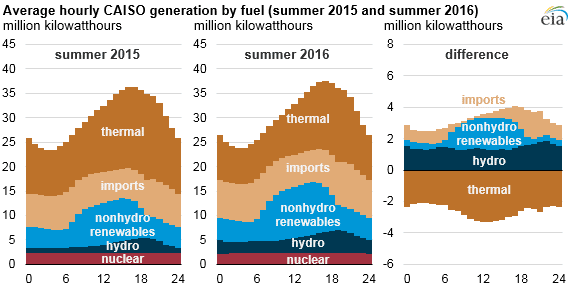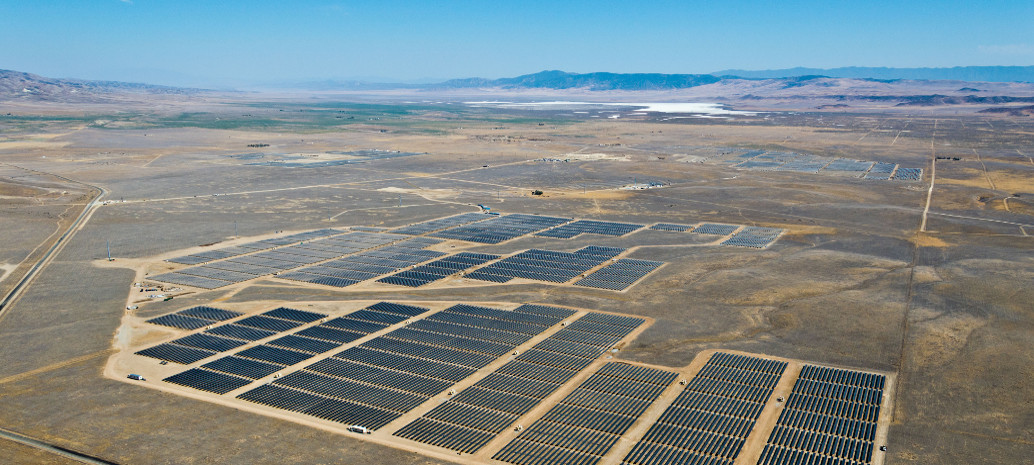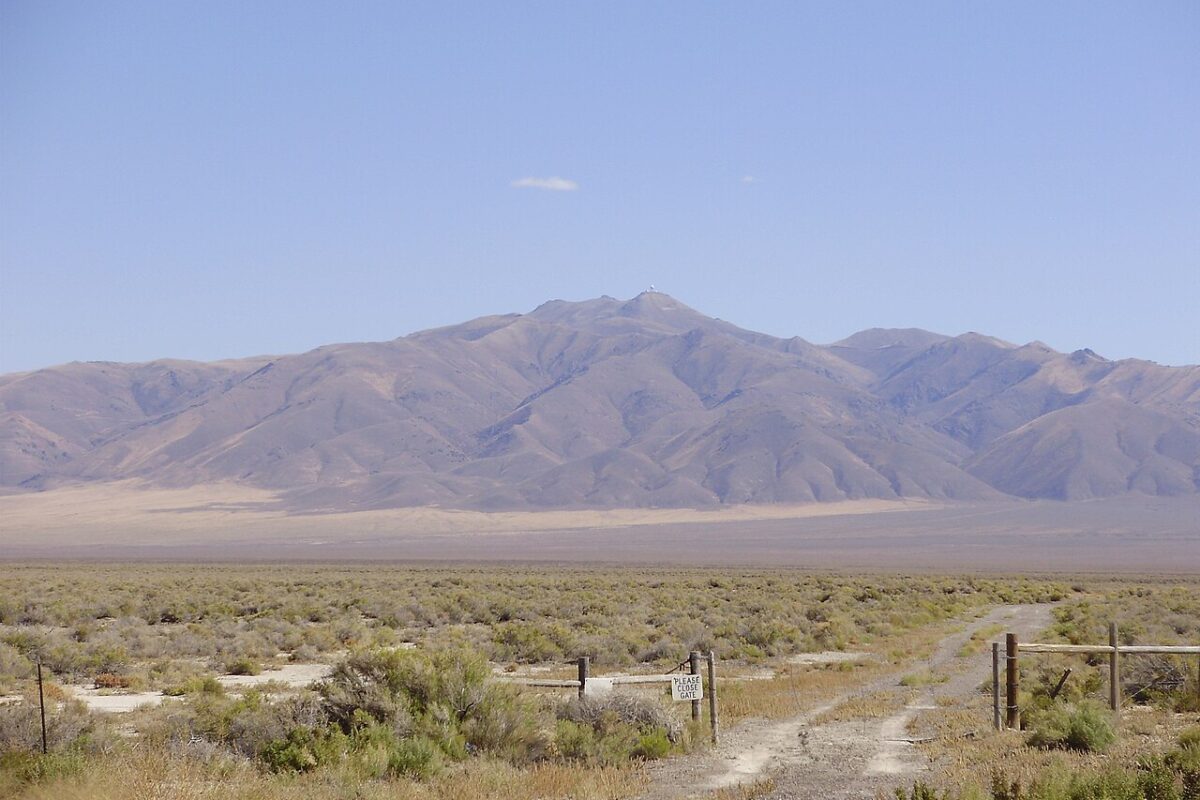Today the U.S. Department of Energy’s Energy Information Administration (EIA) released a new analysis which finds that increased solar and other renewable energy generation has contributed to a decline in thermal generation over the course of June, July and August in California.
Specifically, EIA notes that in the area managed by the California Independent System Operator (CAISO) thermal generation fell 20% compared to the summer of 2015, with reduced natural gas generation representing “almost all” of this decline.

And while hydroelectric generation has increased due to higher rainfall, EIA notes that solar has led the increase in non-hydro renewable energy generation. The agency calculates that utility-scale PV on the CAISO grid increased by 1.4 GW between June 2015 and June 2016, with distributed PV rising another 1 GW. The result is that utility-scale solar alone represented 13% of the 63 GW of the grid’s net summer capacity as of June 2016.
It is clear that this increase in PV generation is also creating challenges during the late afternoon, as solar production rapidly declines and the evening demand peak begins.
However, during the past few years California has been studying and implementing multiple strategies to mitigate the steep rise in demand for thermal generation caused by this phenomenon. Measures already underway include putting online more fast-ramping gas plants and beginning large-scale deployment of energy storage.
This content is protected by copyright and may not be reused. If you want to cooperate with us and would like to reuse some of our content, please contact: editors@pv-magazine.com.









Why is the thermal (fossil fuel) generation not compared to 2011?
According to CASIO data thermal production rose 28% when June, July and Aug 2016 and 2011 are compared. Yet total production was only 7% more for the same period.
Sounds like progress in the wrong direction to me. Though the recent change is good.
Thanks for the comment. Can you supply links to the 2011 data? And what about 2012, 2013 and 2014?
You are welcome.
The data is compiled from: http://www.caiso.com/green/renewableswatch.html
For example yesterday’s numbers are at: http://content.caiso.com/green/renewrpt/20160911_DailyRenewablesWatch.txt.
It is a rather complex data set with 12 values tracked hourly.
For yearly: June, July, and August; Thermal, hydro production and Total ( MWH).
Year | Thermal || Hydro || Total Production
2010 || 24,441,646 || 7,215,235
|| 64,167,868
2011 || 18,203,108 || 9,251,283
|| 63,046,573
2012 || 30,718,755 || 5,589,294
|| 68,502,099
2013 || 28,326,930 || 5,384,897
|| 66,724,087
2014 || 27,091,891 || 4,275,082
|| 66,437,097
2015 || 27,091,891 || 4,275,082
|| 66,437,097
2016 || 23,297,212 || 7,163,443
|| 67,739,445
Hopefully the formatting makes some kind of sense.
I have included the hydro because it is mentioned in the article and 2012 was actually the highest in 2012 of all the years available in that data.
I included 2010 as well usually do not as it is not a complete year (but does have the months in question) but this comparison I find interesting. Especially in light of conservation and behind the meter is suppose to have a big affect.
It is a rather complex dataset with 11 values tracked.